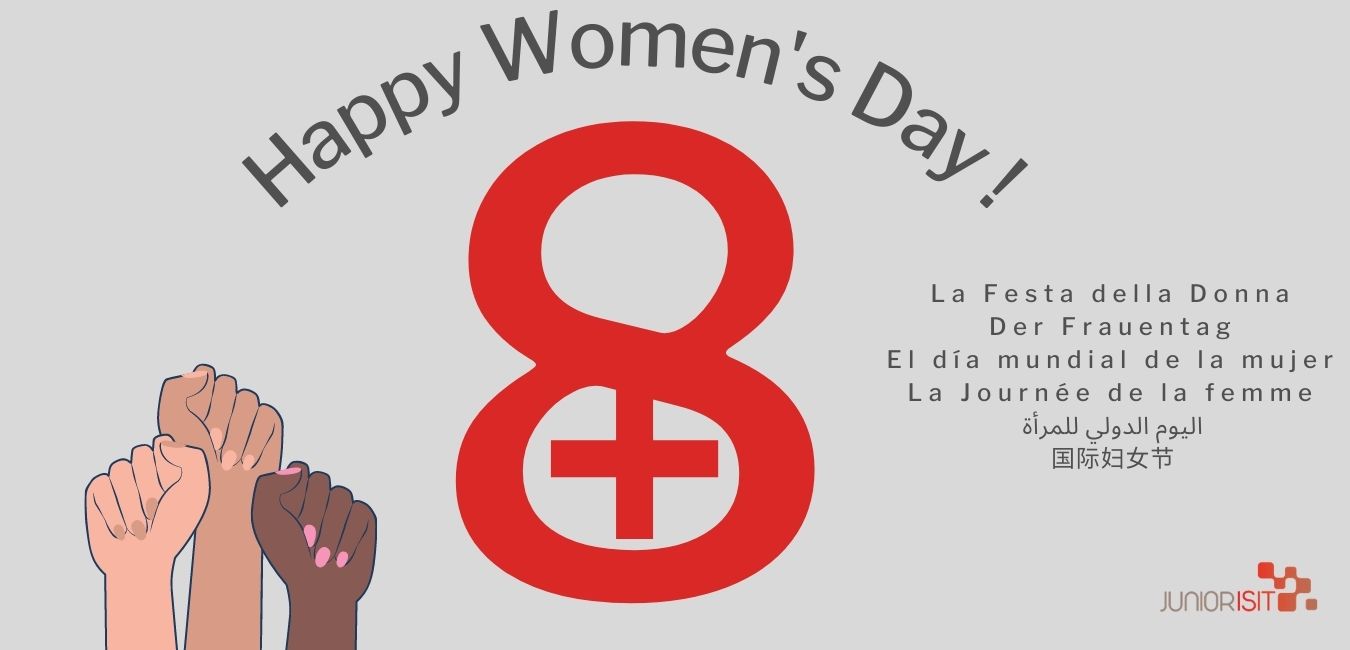“We know nothing of the admirable work achieved by women, even the feminists themselves ignore half of what their ancestors, their mothers… or their contemporaries, have done to enrich the human spirit.” said Marguerite Durand in Le Quotidien, on the 23th of March of 1932.
In order to make sure that what Marguerite Durand denounced in 1932 will cease, today we celebrate International Women’s Day around the world. It is commonly accepted that this day only aims to celebrate womanhood, a mistake often portrayed by media and advertisements. The 8th of March is less so a day to celebrate, than a day to oppose the ongoing inequalities between men and women, and to give women worldwide more visibility.
Back to the past
Even though the date seems to have been chosen randomly, the Bolsheviks thought that the protests of women textile workers, spanning the entire city of Saint Petersburg, is what marked the beginning of the Russian Revolution. This is how this date of International Women’s Day was set: it was also an opportunity for Communist parties to rally women to their cause. Following this, the USSR was the first country to make it an official holiday until 1965, when it became a non-working day too.
Like wildfire, the event spread in the Eastern countries under Soviet control. One could hear on the Czechoslovakian radio in 1946 a description of a traditional Women’s Day in Moscow: “planes airlift yellow mimosa, violets and roses over from the Caucasus and Crimea daily […]. Factories booked entire theatres only for women workers. Women are millions, and millions of men, fathers, lovers and colleagues, are lavishing flowers on them – literally – because today the socialist woman celebrates her Victory, today she celebrates her Liberation.”
It was only in 1977 that the United Nations General Assembly beckoned member states to proclaim March 8 as the UN Day for Women’s Rights.
What about today ?
Nowadays, protests and demonstrations take place to show solidarity, raise awareness, assert equality and celebrate past achievements. Every year, the UN issues a theme for this day. This year, the UN choses to celebrate female leadership, acknowledging girls and women’s efforts in creating a more equal future and their contribution to COVID-19 recovery. The UN Women website spotlights some of the many inspiring grass-roots leaders who are bringing lasting changes to their communities.
They featured, among them, Mayerlín Vergara Pérez, Colombian child rights defender, who devoted more than 20 years to help the Renacer Foundation (“rebirth” in Spanish) to assist over 22,000 children and teenage survivors of sex trafficking, gender violence, and sexism. Her work was rewarded by the Nansen Refugee Award, a humanitarian prize given annually by the UN Refugee Agency. Highlighting the incredible work of women leaders through these hard times presents us with empowering role models our children can look up to.
This day is celebrated in multiple ways around the world. First, on the other side of the Atlantic… In the United States, Women’s History Month is observed in March. The US president issues a proclamation every year in honour of the work of American women. In China, the State Council advises companies to give female employees a half-day leave. And least but not last, back in Europe, Italians gift women yellow mimosas during the Festa della Donna.
How to create a women-friendly working environment in your company ?
Even though it is well-intentioned, try not to let advertisements pressure you into simply buying flowers to your colleagues, since it may only reinforce the stereotypes without solving the substantial inequalities in work accessibility.
Some food for thoughts :
- Don’t hesitate to feminise jobs’ names, use for example “contadora” (female accountant in Spanish) instead of the male version “contador”. You could encourage the members of your team to change their digital signatures, their ID badges or their business cards. This holds doubly true if the language spoken in your workplace has grammar rules that necessitate the gendering of job names.
- Publish job opportunities that are free from gender bias to avoid women’s self-censorship. Studies have found that the language you use in your job description helps to attract or turn off candidates from applying. Try not to use too many words like “ambitious”, “dominate” or “challenging” for example because they make jobs appear less gender diverse and less appealing to women.
- Demonstrate that gender diversity and equality is a genuine concern and priority. Encourage your team to use an inclusive language as often as possible, write an inclusivity guide, seek investment partners that also value supporting women.
- Support women when they make decisions or speak up for themselves by giving them more visibility. Are you organising a conference or a seminar? Well, be sure to invite an equal number of women and men on stage, whenever possible.
And you? How will you help forge a gender equal world?
An article written by Fiona Gaudin, President of Junior ISIT





